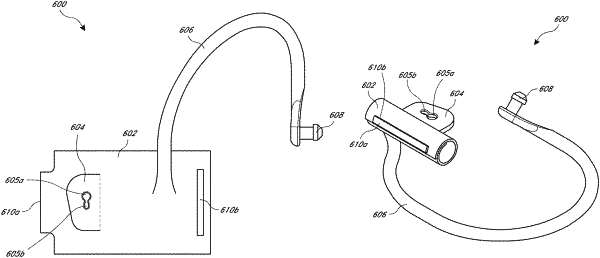| CPC H01R 13/60 (2013.01) [F16G 11/00 (2013.01); G09F 3/02 (2013.01); H01R 13/6392 (2013.01); Y10T 24/398 (2015.01)] | 14 Claims |

|
1. A cable tether system, comprising:
a base member comprising a cable engagement portion configured to fully encircle a circumference of at least a portion of a first cable, wherein the base member comprises a flap formed from a portion of the cable engagement portion, the flap configured to extend radially from the first cable when encircled by the cable engagement portion, the flap comprising a first engagement portion; and
an elongate member comprising a length extending from a proximal end adjacent to the base member to a distal end extending away from the base member, the length of the elongate member configured to at least partially encircle at least a portion of a second cable by securing a second engagement portion at said distal end of the elongate member to the first engagement portion of the base member,
wherein the second engagement portion comprises a protrusion configured to detachably couple with at least one cavity of the first engagement portion, wherein the protrusion comprises a head portion coupled to a body of the elongate member via a neck portion, wherein the head portion has a larger perimeter than the neck portion.
|